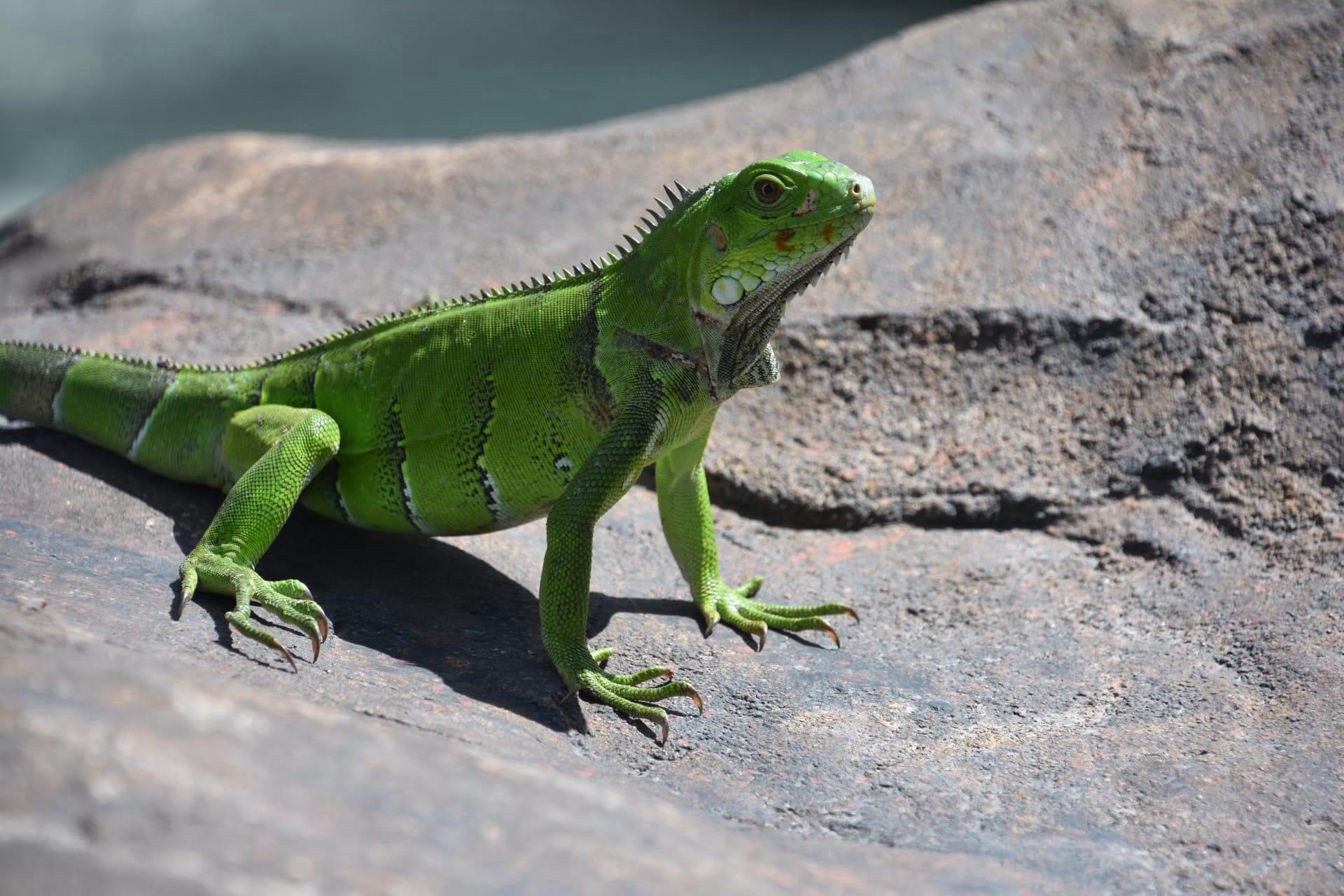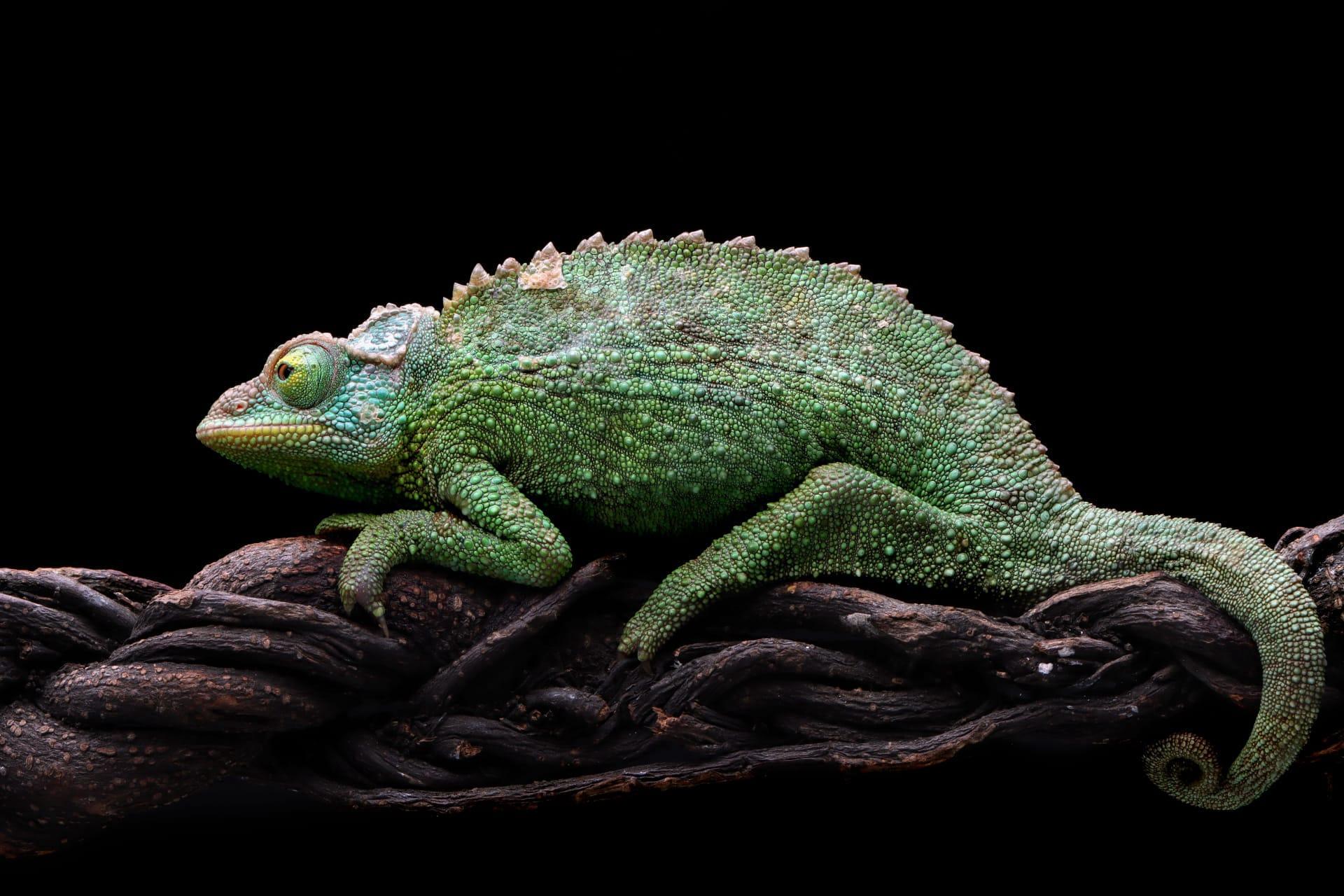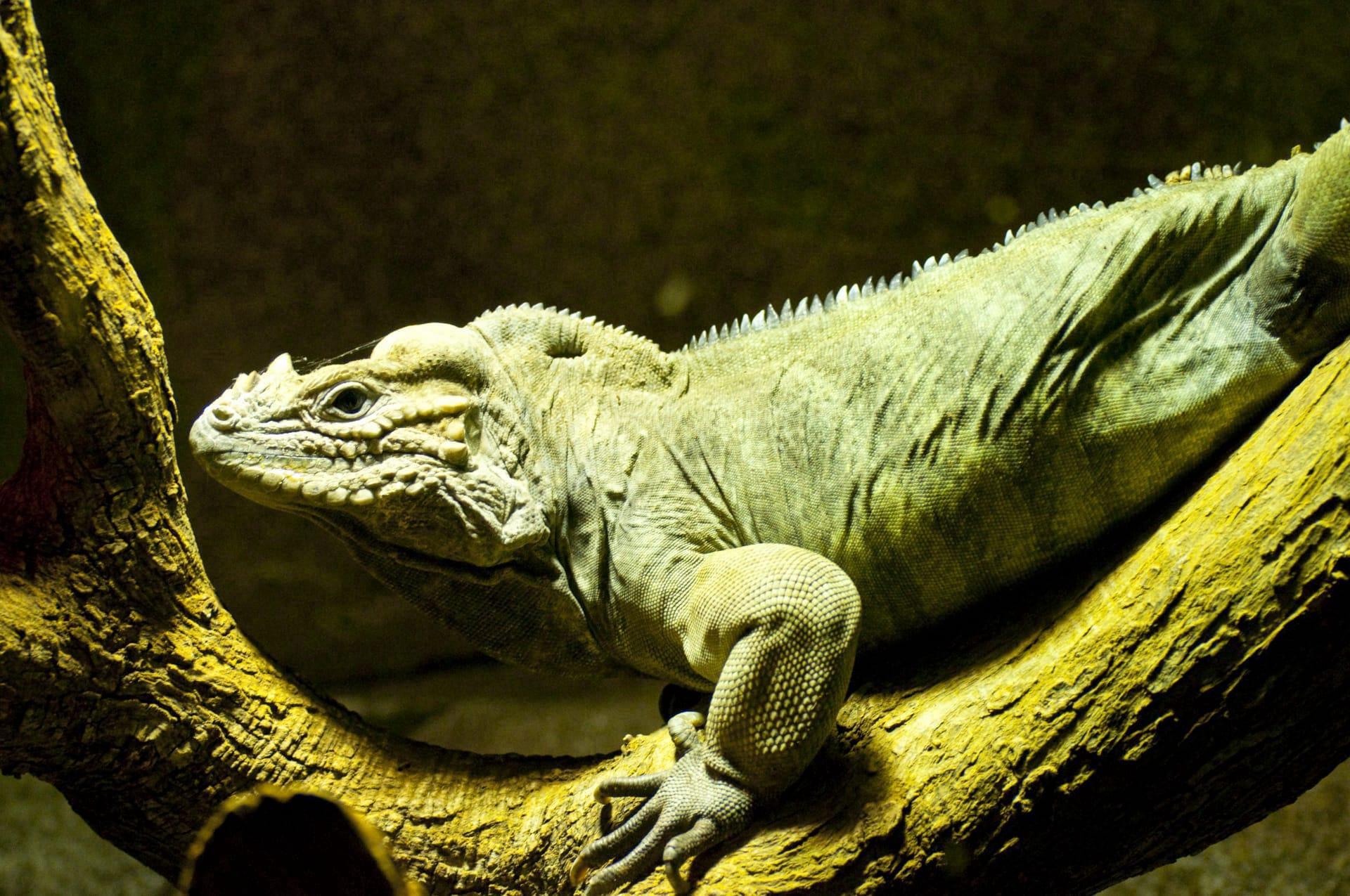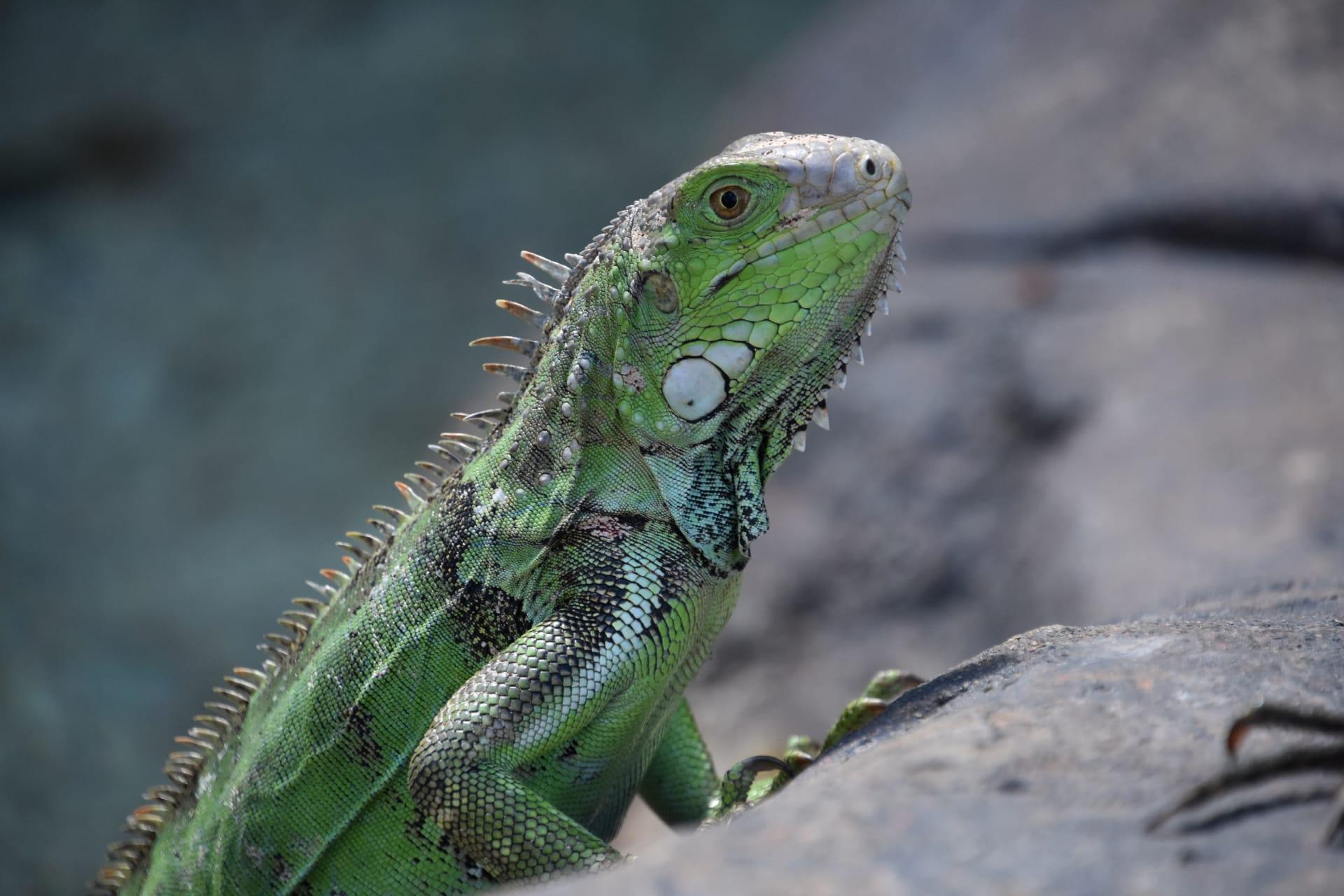Green Iguana Characteristics
- Home /
- Mini Encyclopedia /
- Animal /
- Green Iguana Characteristics
1
Green Iguanas, exotic and vibrant reptiles, boast an impressive size, growing up to 6 feet in length including their tail, which makes up half their length. Weighing around 11 pounds, these creatures have a lifespan of about 20 years in the wild, but can live up to 25 years in captivity with proper care. Their robust and scaly bodies, combined with a range of greens, help them blend into their tropical forest habitats.
The most fascinating organ of the Green Iguana is undoubtedly its 'third eye', scientifically known as the parietal eye. This pale scale on the top of their head isn't for seeing images but is sensitive to changes in light and dark. This adaptation is crucial for survival, helping them detect predators from above like birds of prey. By sensing shifts in light, the third eye alerts the iguana to danger even when it's not directly visible.

2
Question: Why do Green Iguanas bask in the sun for extended periods?
Answer: Green Iguanas are ectothermic, meaning they rely on external sources of body heat. Basking in the sun helps regulate their body temperature, crucial for digestion and overall health. Without sufficient warmth, they can become sluggish and their immune system may weaken. The ideal basking temperature for Green Iguanas ranges from 85 to 95 degrees Fahrenheit. This sunbathing habit also aids in the synthesis of Vitamin D3, essential for calcium absorption and overall skeletal health.

3
Green Iguanas are skilled climbers, using their strong and sharp claws to ascend trees and other high surfaces. This ability is essential for both escaping predators and seeking out sunlight for basking. In the wild, they are often found perched high in the canopy, showing a preference for heights. Their muscular tails aid in balance and agility, especially when navigating through branches.
As for feeding, Green Iguanas are primarily herbivores, munching on leaves, flowers, and fruits. They have strong jaws equipped with sharp teeth, designed for tearing and chewing plant material. Interestingly, their digestive systems have adapted to ferment plant material, efficiently extracting nutrients. This diet preference plays a vital role in their ecological impact, as they help in seed dispersal and maintaining the health of their habitat.

4
Green Iguanas thrive in a variety of environments, predominantly in tropical rainforests, but also in savannas and mangroves. They are native to Central and South America and the Caribbean. These habitats provide ample vegetation for food, as well as trees for basking and refuge. Access to water sources is crucial, as they are excellent swimmers and will dive into water to escape predators or to cool down.
Reproduction in Green Iguanas involves unique behaviors. Males display territorial dominance and attract females through head bobs and dewlap displays. Breeding season usually occurs at the onset of the dry season. Females then lay 20 to 70 eggs in a burrow, which hatch after 90-120 days. These offspring are independent from birth, facing a world full of challenges with no parental support.

5
Book: "Green Iguana: The Ultimate Owner's Manual" by James W. Hatfield III delves into the comprehensive care of Green Iguanas. Published in the USA, this book, first released in the 1990s, stands as an authoritative guide on iguana biology, behavior, and husbandry, offering insights into creating optimal environments for these reptiles in captivity.
Book: "Iguanas For Dummies" by Melissa Kaplan, also from the USA, offers a more accessible approach to Green Iguana care. Published in the early 2000s, it combines practical advice with a touch of humor, covering everything from feeding and habitat setup to health issues. This book is ideal for beginners and seasoned iguana enthusiasts alike.